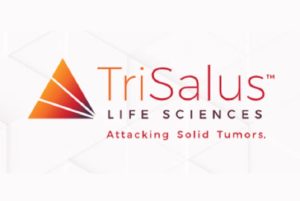 TriSalus Life Sciences, an oncology company integrating delivery technology with immunotherapy in the treatment of patients with liver and pancreatic tumours, today announced the publication in Current Medical Research and Opinion—a manuscript detailing a real-world study of the use of the pressure-enabled drug delivery (PEDD) method with the TriNav device for transarterial chemoembolization (TACE) and transarterial radioembolization (TARE) in patients with hepatocellular carcinoma (HCC) and liver metastases.
TriSalus Life Sciences, an oncology company integrating delivery technology with immunotherapy in the treatment of patients with liver and pancreatic tumours, today announced the publication in Current Medical Research and Opinion—a manuscript detailing a real-world study of the use of the pressure-enabled drug delivery (PEDD) method with the TriNav device for transarterial chemoembolization (TACE) and transarterial radioembolization (TARE) in patients with hepatocellular carcinoma (HCC) and liver metastases.
The data presented in this study captured real-world safety and clinical outcomes data for TriNav in its launch phase, utilising a large, 300 million patient dataset covering 98% of payers in the US. These data provide valuable insights into the important benefits of this technology that would otherwise take many years to accumulate through alternative approaches using clinical trials. Key findings include that TriNav patients, despite a higher baseline disease burden and clinical complexity, showed overall clinical results comparable to patients with lower disease burden.
The study also revealed that, in TACE procedures, interventional radiologists could deliver more of the chemotherapeutic agent to the tumour when using TriNav vs. the amount delivered using standard catheters, a critical treatment goal. In a matched cohort comparison, TriNav patients had fewer 30-day inpatient visits post-procedure, than non-TriNav patients.
TriNav HCC patients were more likely to have a post-procedure liver transplant in a matched cohort comparison. TriNav TARE patients with liver metastases had fewer clinical complications post-procedure vs. non-TriNav patients in a matched cohort comparison. Additionally, TriNav TARE patients with liver metastases had lower rates of post-procedure fatigue vs. non-TriNav patients.
These study data demonstrate that TriNav is preferentially selected to treat patients with a higher burden of disease than patients treated with standard catheters, yet these patients show similar results post-treatment compared to patients with a lower disease burden. TriNav patients showed trends toward better outcomes in matched cohort comparisons, including an increased rate of liver transplants.
“Analyses of real-world data are critical to obtaining a holistic understanding of the benefits of treatment with TriNav. The ability of the PEDD method to impact more complex patients when compared to standard-of-care drug delivery systems is potentially game-changing and brings us closer to addressing the limitations of current treatment options for HCC and other liver cancer patients,” said Mary Szela, chief executive officer of TriSalus.
“This important, peer-reviewed, real-world study speaks to our commitment to improve patient care and outcomes. These data, together with the recent, new Centers for Medicare and Medicaid (CMS) Healthcare Common Procedure Coding System (HCPCS) code effective as of this year, are a testament to TriNav’s continued emergence as a potentially best-in-class and cost-effective drug delivery method for patients with liver and pancreatic tumours.”
“These new population-based findings resonate well with previously published clinical studies that indicate PEDD improves therapeutic uptake, accuracy of therapeutic delivery, and clinical outcomes in liver cancer patients. The ability of the TriNav’s SmartValve to favourably modulate drug delivery pressure and flow within target blood vessels gives liver cancer patients, even those with major medical comorbidities and large tumour burdens, the opportunity to achieve better outcomes,” said Steven C Katz, chief medical officer at TriSalus. “This large sample size study underscores the particular benefits of the TriNav device compared to standard drug delivery systems.”










